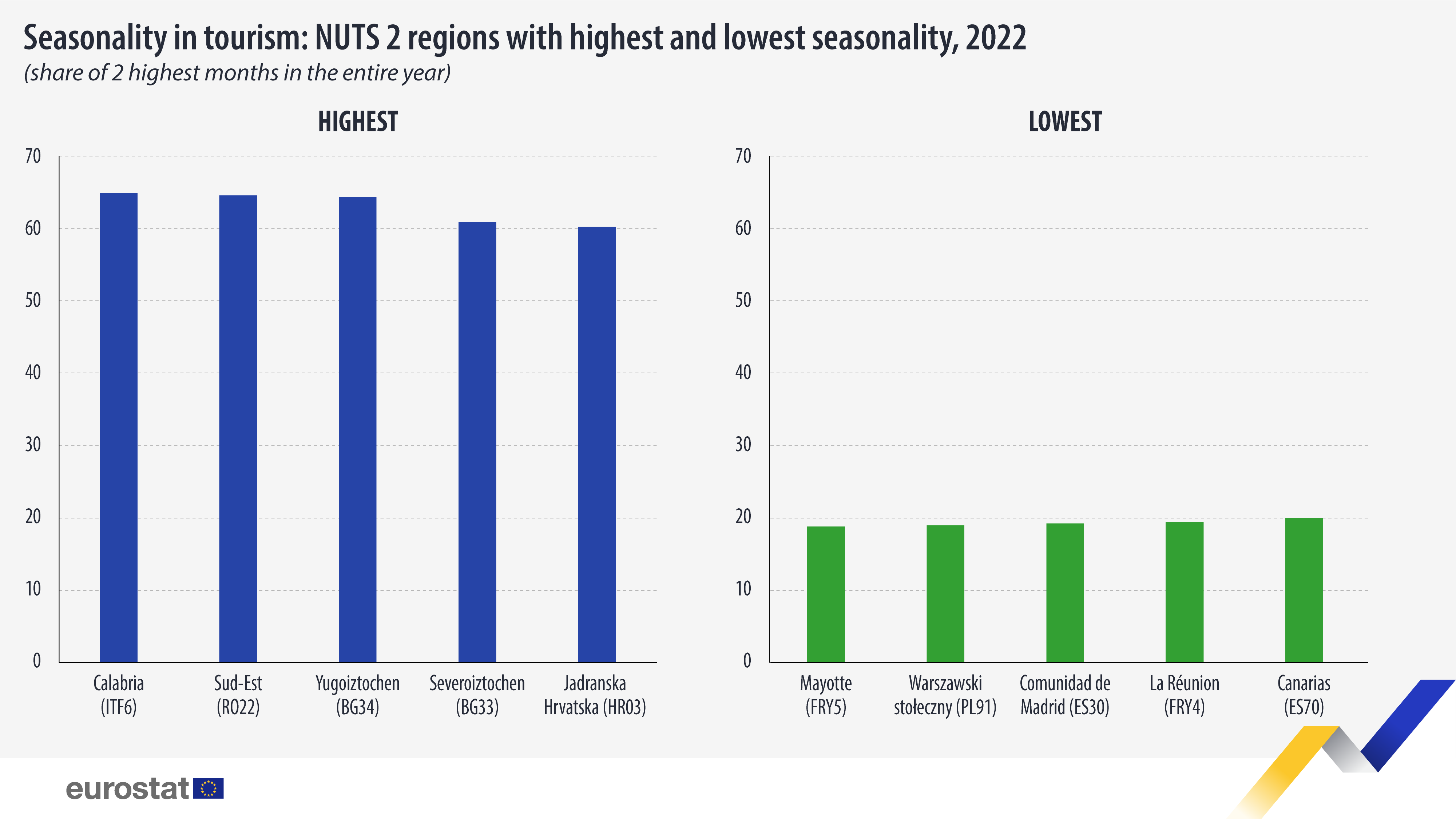Tourism peak months differ across EU regions

In 2022, at the EU level, 34% of all tourism nights spent occurred in just two months, July and August. In nearly 3 of 4 EU regions at level 2 of the nomenclature of territorial units for statistics (NUTS 2), August was the month with the highest concentration in the number of nights spent (170 out of the 242 EU NUTS 2 regions). It was followed by July in 62 EU regions, covering most of northern Europe and parts of Belgium, Czechia, Germany, France, Italy, Hungary and Slovakia.
In 15 coastal regions located in Bulgaria, Greece, France, Croatia, Italy, Romania and Sweden, more than 5 out of 10 tourism nights were spent during July or August, the top two months in these regions.
Source dataset: tour_occ_nin2m
In 1 out of 5 regions for which data are available (49 out of 242 regions), more than 40% of the annual nights are spent in the top 2 months (July and August).
The EU region with the highest level of seasonality concentrated in July and August was Calabria, in Italy, with 64.8%. This was followed by the coastal region of Romania, Sud-Est (64.5%), the Bulgarian regions of Yugoiztochen (64.3%) and Severoiztochen (60.9%) and the Croatian region Jadranska Hrvatska (60.2%). This Croatian region is also one of the most visited of all the EU regions.
Source dataset: tour_occ_nin2m
For the regions with the lowest seasonality, the two months with the most nights spent differed. Mayotte in France reported the lowest seasonality in the EU, with 18.8% of tourism nights in 2022 spent in the months of March and May. This was followed by the Polish region Warszawski stołeczny (19.0%), with June and August, the Spanish region Comunidad de Madrid (19.2%) with June and October, the French island La Réunion (19.8%) with August and October, and the Spanish region Canarias (20.0%) with July and August.
Generally speaking, regions that include capital cities tend to attract tourists all year round, be it for private or professional reasons, and show a less pronounced seasonal pattern. In 15 out of 22 EU countries that have regional subdivisions, the capital region is the least seasonal region. This is the case for the regions comprising Brussels, Sofia, Prague, Copenhagen, Dublin, Madrid, Zagreb, Rome, Vilnius, Budapest, Vienna, Warsaw, Bucharest, Bratislava and Stockholm.
For more information
- Statistics Explained article on tourism statistics – seasonality at regional level
- Thematic section on tourism
- Database on tourism statistics
If you have any queries, please visit our contact us page.

